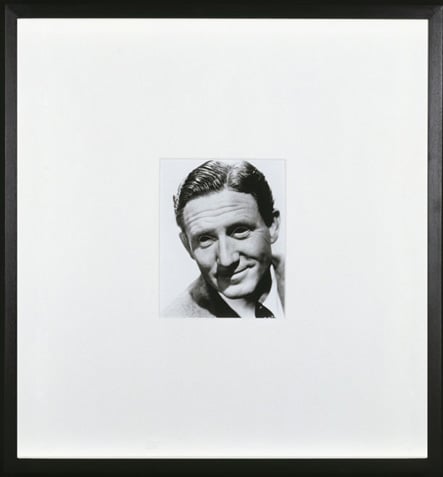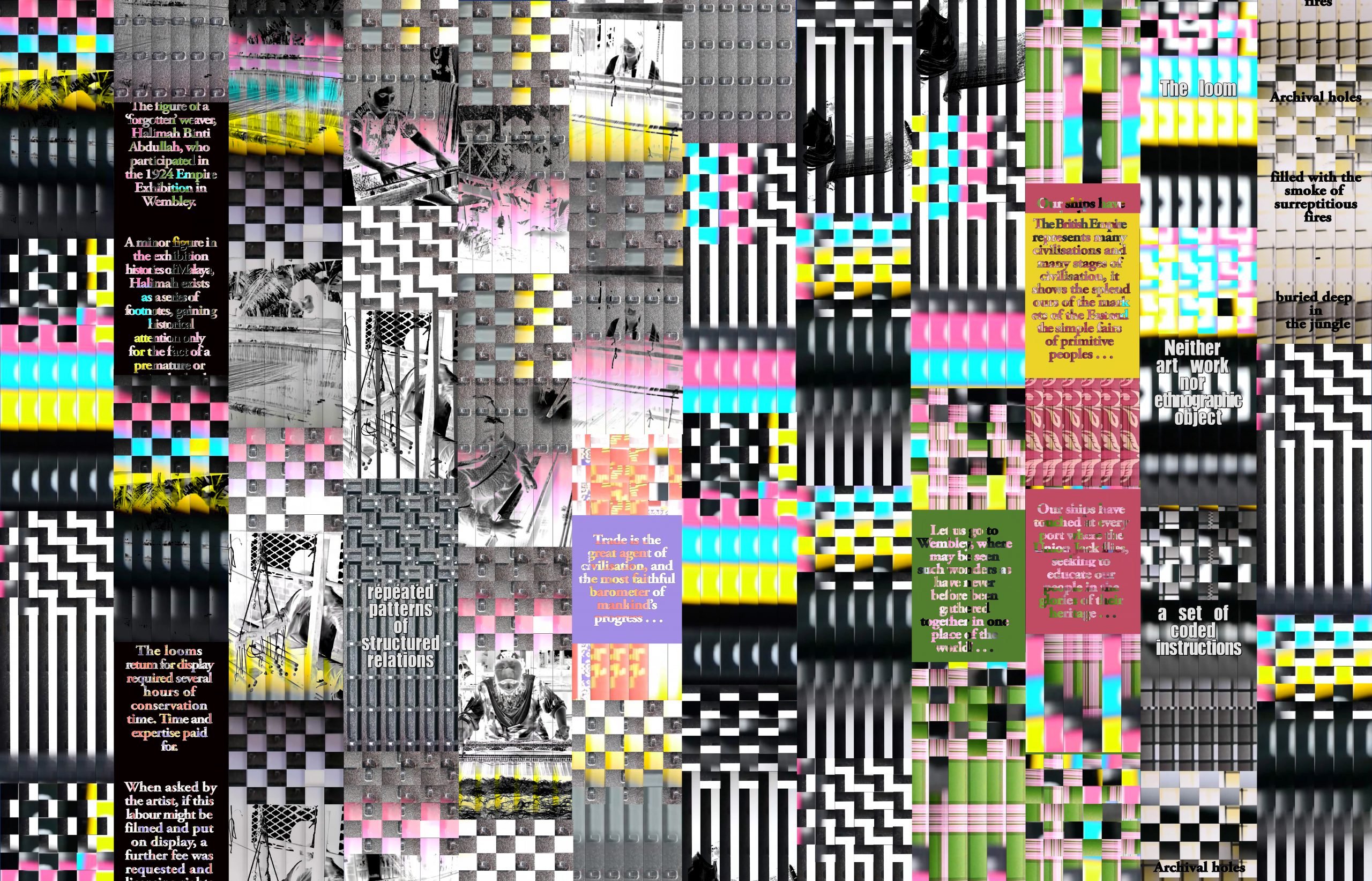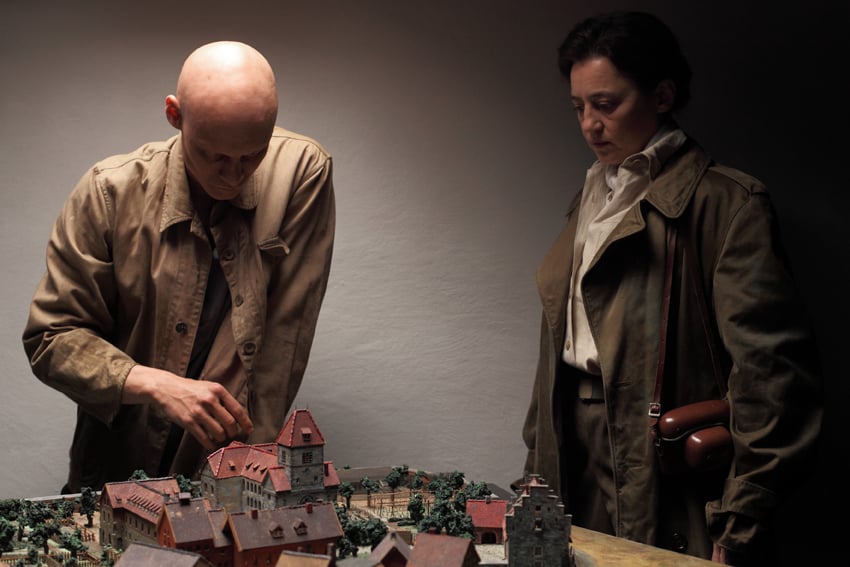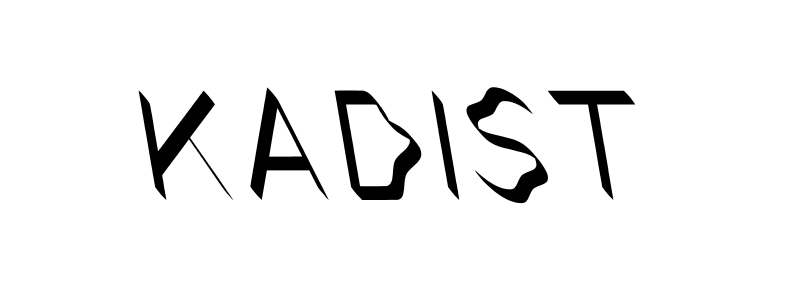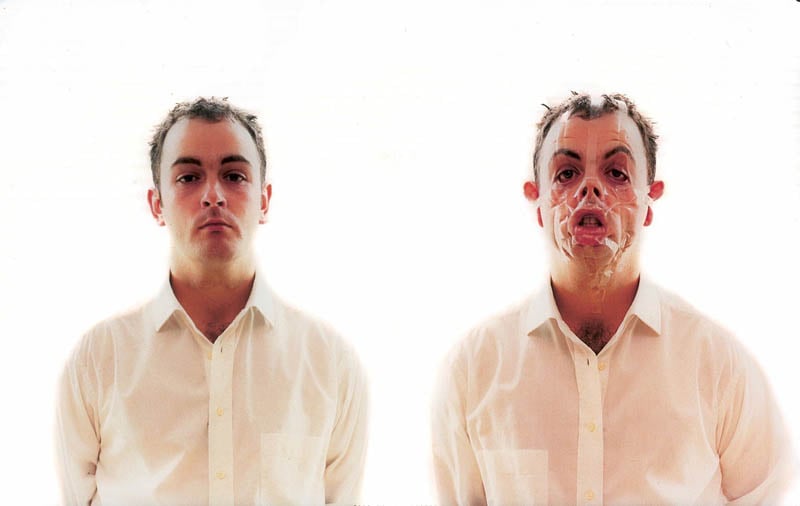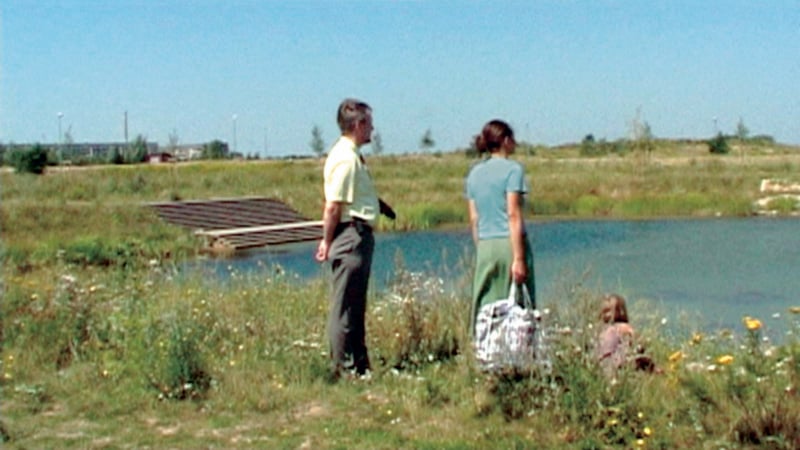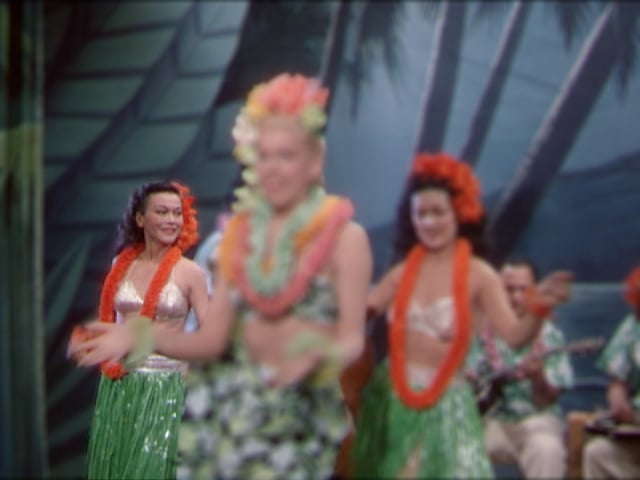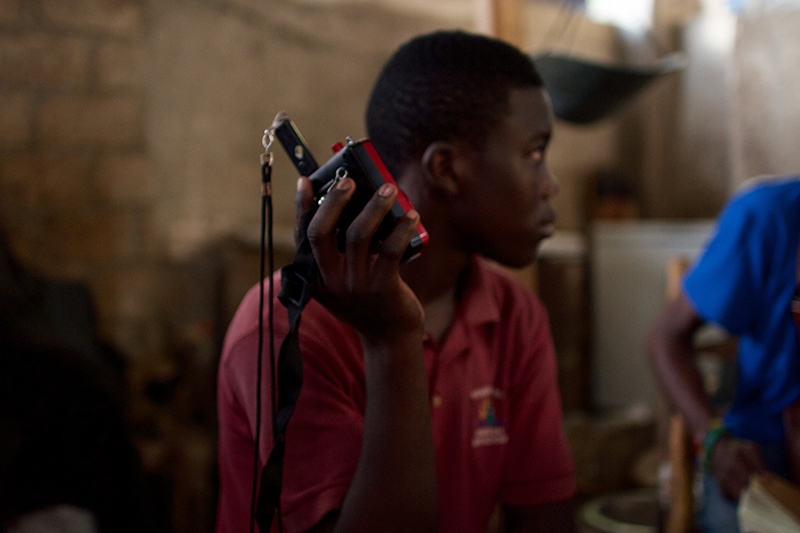
© » KADIST
Claudia Joskowicz
The primary interest in the trilogy is Joskowicz’s use of cinematic space, with long tracking shots that portray resistance to habitual viewing experiences of film and television. Video plays a role in the relation between the use of her locations and the stories of actual figures depicted as central in the frame. The meaning behind these historical icons such as Che and Cassidy, speak to their stories as itinerant figures whom traveled in a preglobalized era through borders and cultures in order to escape the law or overthrow it.

© » KADIST
Claudia Joskowicz
The primary interest in the trilogy is Joskowicz’s use of cinematic space, with long tracking shots that portray resistance to habitual viewing experiences of film and television. Video plays a role in the relation between the use of her locations and the stories of actual figures depicted as central in the frame. The meaning behind these historical icons such as Che and Cassidy, speak to their stories as itinerant figures whom traveled in a preglobalized era through borders and cultures in order to escape the law or overthrow it.

© » KADIST
Claudia Joskowicz
The primary interest in the trilogy is Joskowicz’s use of cinematic space, with long tracking shots that portray resistance to habitual viewing experiences of film and television. Video plays a role in the relation between the use of her locations and the stories of actual figures depicted as central in the frame. The meaning behind these historical icons such as Che and Cassidy, speak to their stories as itinerant figures whom traveled in a preglobalized era through borders and cultures in order to escape the law or overthrow it.

© » KADIST
Claudia Joskowicz
Los rastreadores is a two-channel video by Claudia Joskowicz narrating the story of a fictitious drug lord, Ernesto Suarez, whose character is based on the well-known Bolivian drug dealer, Roberto Suárez. In the video, Suarez returns home from prison and survives a massacre that takes place at his home in Bolivia. Told in four chapters, the story is inspired by John Ford’s American Western classic film The Searchers (1956), this work similarly focuses on the politicized atmosphere of Bolivian history, searching for cues of race and alienation.

© » KADIST
Claudia Joskowicz
Some Dead Don’t Make a Sound (Hay muertos que no hacen ruido) is a single-channel video by Claudia Joskowicz that features the Mexican legend of the Weeping Woman (La Llorona) as its main protagonist. The video begins with the image of a ghost-like female figure, representing La Llorona, slowly walking down a well-known street in Oaxaca, from the main square (el Zócalo) to the Teatro Macedonio Alcalá, with a painful expression on her face. According to this famous oral myth, the Weeping Woman drowned her two sons in a fit of grief and anger after her husband abandoned her.
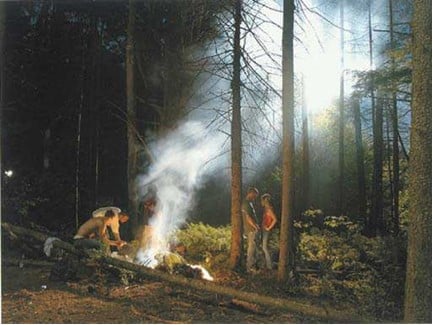
© » KADIST
Gregory Crewdson
Forest Gathering N.2 is part of the series of photographs Beneath the Roses (2003-2005) where anonymous townscapes, forest clearings and broad, desolate streets are revealed as sites of mystery and wonder; similarly, ostensibly banal interiors become the staging grounds for strange human scenarios. These scenes are tangibly atmospheric, visually alluring and often deeply disquieting. Never anchored precisely in time or place, these and the other narratives of Beneath the Roses are rather located in the dystopic landscape of the anxious American imagination.

© » KADIST
Chen Chieh-Jen
Empire’s Borders II – Passage and Empire’s Borders II – Workers are from the three-channel film installation Empire’s Borders II – Western Enterprise, Inc. (2010), which takes as its point of departure the political context of the 1950s and the Cold War, when American interests in Taiwan overlapped with the Chinese civil war. Cooperating with the Chinese Kuomintang, the American CIA established something called Western Enterprises, an agency whose main tasks included training an anti-Communist National Salvation Army (NSA) for a surprise attack on Communists in mainland China and establishing Taiwan as a base for anti-Communist operations in Southeast Asia. Narrated from the point of the view of the artist’s father, once a member of the NSA, the project interweaves personal experience with historical events.

© » KADIST
Chen Chieh-Jen
Empire’s Borders II – Passage and Empire’s Borders II – Workers are from the three-channel film installation Empire’s Borders II – Western Enterprise, Inc. (2010), which takes as its point of departure the political context of the 1950s and the Cold War, when American interests in Taiwan overlapped with the Chinese civil war. Cooperating with the Chinese Kuomintang, the American CIA established something called Western Enterprises, an agency whose main tasks included training an anti-Communist National Salvation Army (NSA) for a surprise attack on Communists in mainland China and establishing Taiwan as a base for anti-Communist operations in Southeast Asia. Narrated from the point of the view of the artist’s father, once a member of the NSA, the project interweaves personal experience with historical events.

© » KADIST
Sharon Lockhart
Lockhart’s film Lunch Break investigates the present state of American labor through a close look at the everyday life of the workers at the Bath Iron Works shipyard—a private sector of the U. S. naval shipbuilding company—in Maine. Gary Gilpatrick, Insulator (2008) belongs to a group of portrait-like photographs of the shipyard’s workers lunchboxes. Created over the period of a year, Lockhart’s film and accompanying still photographs are intended as an exploration of the social spaces inside this kind of workplace.

© » KADIST
Matt Lipps
In the series Horizons (2010), Lipps uses appropriation to riff on Modernism’s fascination with abstract form. For Untitled (Men) (2011), he snipped from magazines and textbooks pictures of handsome or famous men, from the ancient Greek to the modern. Arranged in a tableau, lit theatrically, and rephotographed, the two-dimensional figures have an embodied presence.

© » KADIST
Sharon Lockhart
Lockhart’s film Lunch Break investigates the present state of American labor, through a close look at the everyday life of the workers at the Bath Iron Works shipyard—a private sector of the U. S. naval shipbuilding company—in Maine. Stanley “Tom” Durrell, Tinsmith (2008) belongs to a group of portrait-like photographs of the shipyard’s workers lunchboxes. Created over the period of a year, Lockhart’s film and accompanying still photographs are intended as an exploration of the social spaces inside this kind of workplace.

© » KADIST
Xu Tan
Drawing & Print (Drawing & Print)
Shanghai Biennale, Awaiting Your Arrival is an appropriation of the posters made to promote biennial art exhibitions. Displayed alongside the marketing posters of official biennials (Shanghai, Berlin, Venice, etc.) Displayed alongside the official marketing materials of biennials (Shanghai, Berlin, Venice, etc.)

© » KADIST
Juliana Huxtable
Herculine’s Prophecy by Juliana Huxtable features a kneeling demon-figure on what appears to be a screen-print, placed on a wooden table, which has then been photographed and digitally altered to appear like a book cover, with a title and subtitle across the top, and a poem written across the bottom. This composition is stuck to a metal plate by a series of button magnets, with interjecting phrases on them. The juxtaposition between the mysogynistic, almost puritan poetry that stripes across the bottom and the powerful crouching pose that the femme demon assumes inverts the hegemonic text , instead creating a space of alterity.

© » KADIST
Sharon Lockhart
Visalia Livestock Market, Visalia, California results from Lockhart’s prolonged investigation of an agricultural center and community. Lockhart traveled around California’s Central Valley, spending time with cattle ranchers on their properties and attending livestock auctions with them and getting a sense of the rhythm of their lives. Throughout this time, the artist shot more than one hundred four-by-five-inch negatives but chose to print just this one from the series.

© » KADIST
Matt Lipps
Untitled (Women) (2011) presents a startlingly succinct history of violently romanticized femininity. Matt Lipps created this diptych by photographing a single arrangement of cutouts. As in his analogous portrait of men, the middle section appears twice, on either side of the split, signaling a stutter, a caesura, or a schizophrenic break.

© » KADIST
Xu Tan
Drawing & Print (Drawing & Print)
Biennale, Dog is an appropriation of the posters made to promote biennial art exhibitions. Displayed alongside the official marketing materials of biennials (Shanghai, Berlin, Venice, etc.) Xu’s works provide a satiric and provocative alternative to the official system and make publicly visible images of many realities.

© » KADIST
Wong Hoy Cheong
Re: Looking marks a new phase in Wong’s work which connects his region’s history with other parts of the world. The video—located in an imagined contemporary Malaysian middle-class living room, a space of a fictive former imperial power—explores the precarious link between fact and fiction, fakery and authenticity by overlaying three believable, authoritative forms: a documentary, a website, and a realistic reconstruction of a contemporary home. It is rife with occidental colonial documents and exotic cultural artifacts—the trophy-evidence of Empire-making.

© » KADIST
Ming Wong
Making Chinatown (2012) is a remake of Roman Polanski’s 1974 classic neo-noir film Chinatown . According to Wong, the latter is a “textbook” of Hollywood filmmaking . In Ming’s version, he plays all four main characters portrayed originally by Jack Nicholson, Faye Dunaway, John Huston, and Belinda Palmer, shooting against a backdrop of a film set reproduced as wallpaper in a gallery space.

© » KADIST
Wong Hoy Cheong
Days of Our Lives: Reading is from a series of work was created for the 10th Biennale de Lyon by the artist. It marks a new dimension of his ongoing effort to negotiate with the postcolonial reality across the world, with a unique interventional strategy to deal with the French society. Named after a soap opera in U. S. which has been running practically everyday for over 40 years, Days Of Our Lives is a series of six photographs which explores this new Europeaness.

© » KADIST
Wong Hoy Cheong
Created for the tenth Lyon Bienniale, in Days of Our Lives: Playing for Dying Mother, Wong’s ongoing negotiation of postcolonial globalization takes aim at French society. Named after an American daytime soap opera that been running for over forty years, Days of Our Lives is a series of six photographs that explore contemporary Europeaness. Here, domestic, everyday scenes drawn from French paintings in the Museum of Fine Arts in Lyon——preparing food, relaxing, reading and playing music, giving charity to the poor, being evicted from home, or going off to War—are reenacted by Muslim Nigerians, Iranians, Turkish, and Buddhist Burmese minorities.
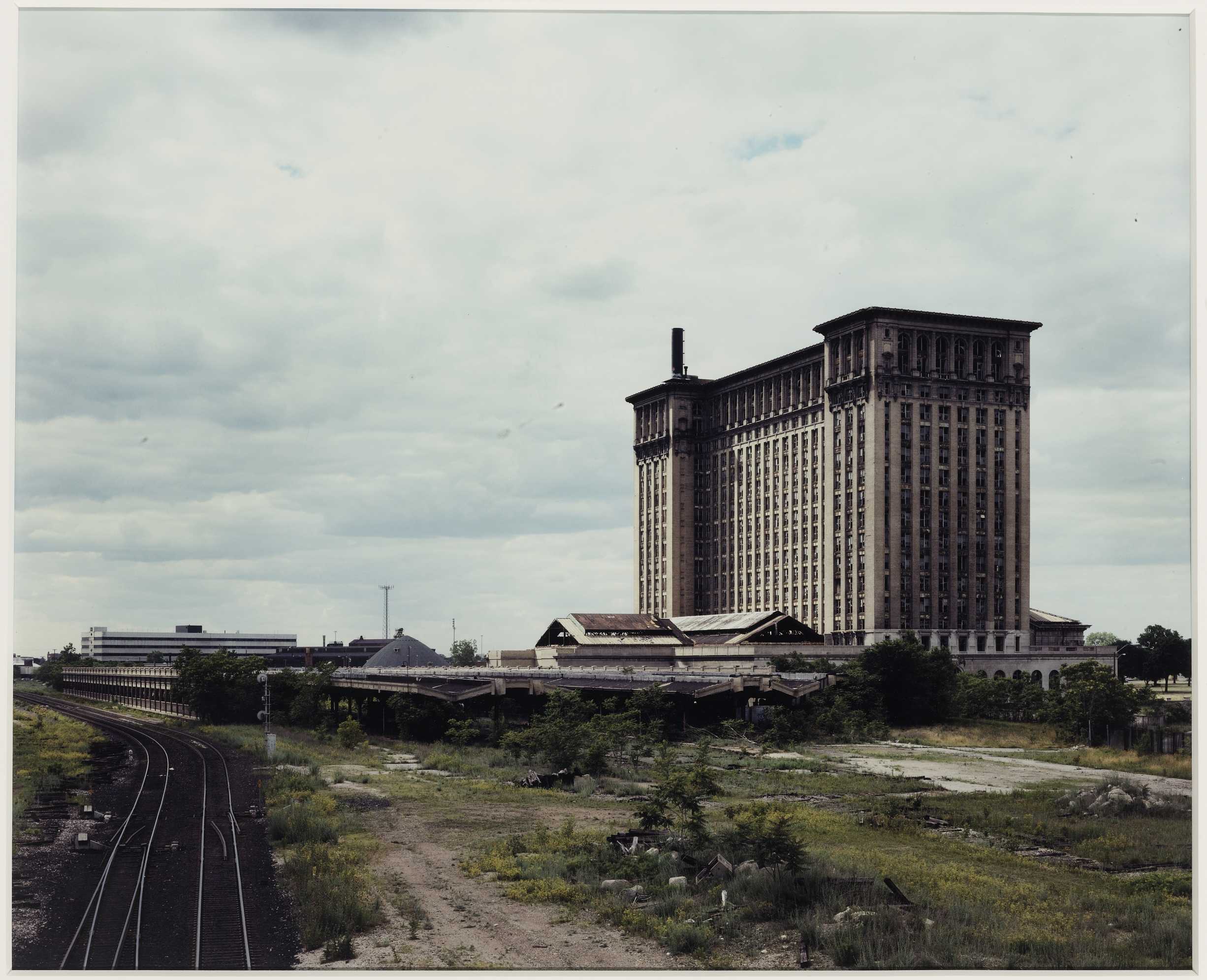
© » KADIST
Stan Douglas
Michigan Central Station is part of a larger photographic series, Detroit Photos , which includes images of houses, theaters, stadiums, offices, and other municipal structures. Continuing his fascination with failed modernist utopias, Douglas depicts Michigan Central Station as a monolithic, almost prison-like structure lording over a desolate landscape. Once the hub of industrial transportation, the station is now devoid of any human activity and lies fallow, surrounded by train-less tracks and vegetation-less ground.

© » KADIST
Jeff Wall
As suggested by its title, Pipe Opening (2002) depicts a hole in a wood wall exposed by the removal of a pipe. In contrast to his signature immense tableaux, Pipe Opening is a direct but modest document of a “real” scene that Wall “encountered by chance” in daily life. However factual, the image indicates certain enigmatic significance, allowing multiple interpretations.

© » KADIST
Michelle Handelman
In Dorian, a cinematic perfume, video is used as a community gatherer, a tool to speak about particular subcultures, in this case the trans-gender drag queen New York community, past and present. Developed from a literary work, it deconstructs notions of narrative forms, styles and conventions. It is a hybrid piece, an example of the elasticity of the medium.

© » KADIST
Ranu Mukherjee
Conceived as a large-scale mural-like projection, Color of History, Sweating Rocks is a neo-futuristic, hybrid film that combines cinematic language, collage, animation, and inventive forms to highlight the plight of the peoples of the Sahara—and refugees in general—who have been displaced by oil-mining.

© » KADIST
Colter Jacobsen
Victory at Sea is a simple mechanism made from cardboard and found materials that mimics the Phenakistoscope, an early cinematic apparatus. The piece requires the viewer to turn a wheel and look through a small hole in order to see a briefly animated succession of small drawings of sailors.

© » KADIST
Geoffrey Farmer
Ongoing Time Stabbed with a Dagger was Farmer’s first kinetic sculpture that added a cinematic character to an “ever-reconfiguring play presented in real time.” The assembly of various objects and props on top of a large platform constitutes not only a work, but, to a certain extent, a show in itself. The title of the piece comes from the literal translation of René Magritte’s painting from 1938, La Durée Poignardée , whose more familiar translation is “Time Transfixed.”

© » KADIST
Apostolos Georgiou
Untitled (2016) is characteristic of the artist’s practice. Apostolos Georgiou invites us into a scene of cinematic tension. In the foreground, a man is kneeling with his hands on his head.

© » KADIST
Nathaniel Dorsky
Dorsky’s pieces included in the Kadist Collection are small still photographs from twelve of his most important films. Here, the still images function in the same way as his cinematographic work: Highly aesthetic, they allow for the appearance of intricate visual patterns and layers of meaning that take scenes of everyday life as its source material. Both Dorsky’s cinematic and photographic works follow a stream of consciousness that rejects representation or fixed narrative structure.

© » KADIST
Todd Hido
The two pieces in the Kadist Collection depict foggy landscapes, one at dawn, the other at nighttime. Both dimly lit scenes are dominated by an eerie feeling. Taken by a road, these painterly photographs suggest the uncanny character of the transient.
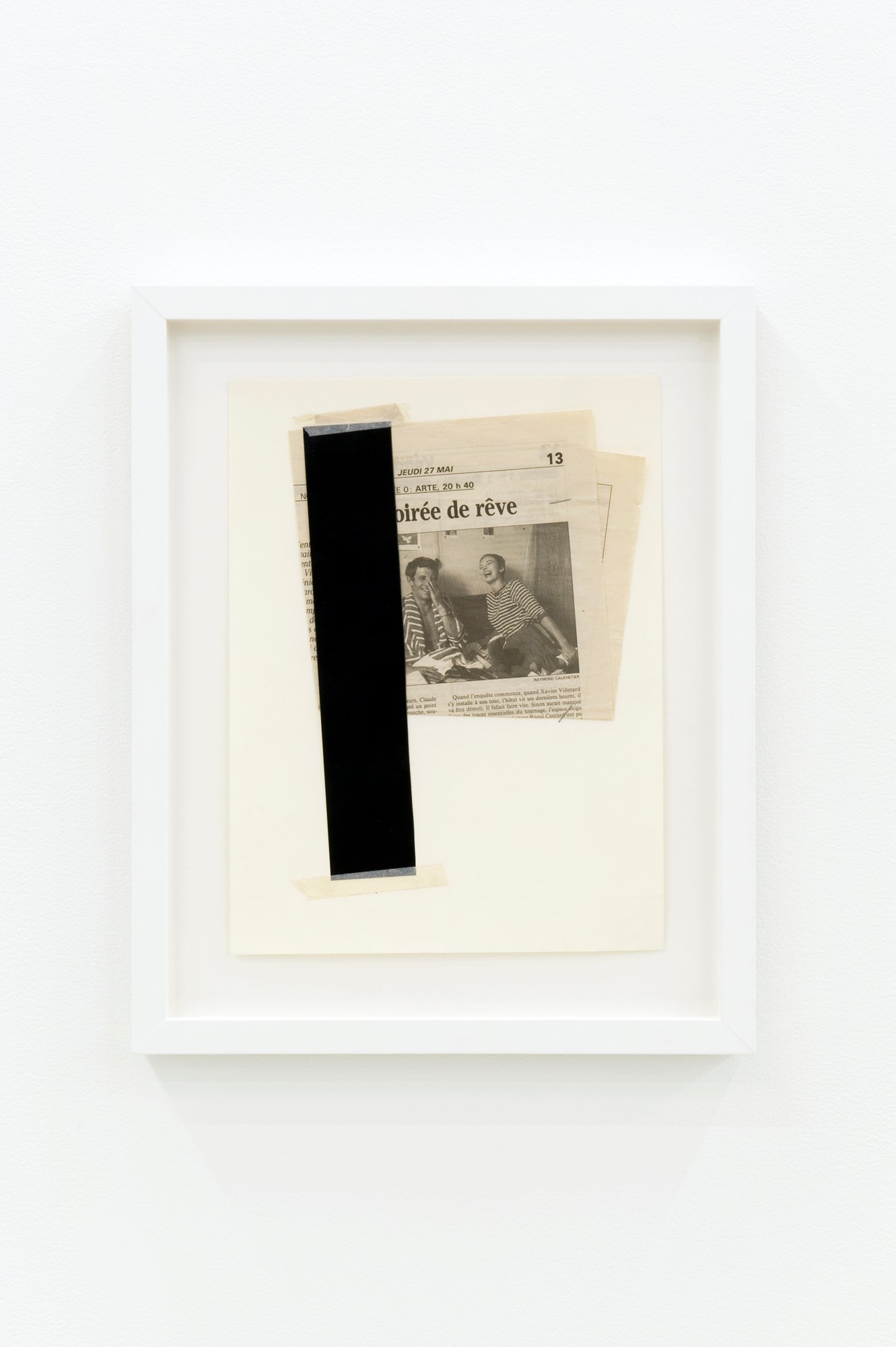
© » KADIST
Ian Wallace
Untitled (Breathless) presents a folded newspaper article on Jean-Luc Godard’s À Bout de Souffle (Breathless). The work uses collage techniques—it is stapled down and has a thick strip of contact sheet paper taped over it—that convert the media coverage on Godard’s film into a filmic object itself. The black paper enacts a kind of cinematic “jump cut” on the article, while simultaneously drawing attention to the medium of the film, as well as the photograph reproduced in this newspaper article.
Claudia Joskowicz
Claudia Joskowicz is a video and installation artist working at the intersection of landscape, history, and memory...
Sharon Lockhart
- year born: 1964
- gender: female
- nationality: American
- home town: Norwood, Massachusetts
Douglas Gordon
- location: Berlin, Germany
- year born: 1966
- gender: male
- nationality: Scottish
- home town: Glasgow, United Kingdom
Joana Hadjithomas & Khalil Joreige
Joana Hadjithomas and Khalil Joreige collaborate as both filmmakers and artists, producing cinematic and visual artwork that intertwine, spanning feature and documentary films, video and photographic installations, sculpture, performance lectures and texts...
Wong Hoy Cheong
- location: Kuala Lumpur, Malaysia
- year born: 1960
- gender: male
- nationality: Malaysian
- home town: George Town, Malaysia
Takeshi Murata
Underlining the temporality of nostalgia, memory, and narratives crafted through cinematic pop culture, the American artist Takeshi Murata has constructed a body of animated works that explore the lifespan of moving images and their role in the shaping of shared cultural histories...
Chen Chieh-Jen
- location: Taipei, Taiwan
- year born: 1960
- gender: male
- nationality: Chinese
- home town: Taoyuan, Taiwan
Jakrawal Nilthamrong
Jakrawal Nilthamrong is a Thai artist and filmmaker who came to prominence for his unconventional approach to filmmaking...
Matt Lipps
- location: San Francisco, California
- year born: 1975
- gender: male
- nationality: American
- home town: San Francisco, California
Amie Siegel
- year born: 1974
- gender: female
- nationality: American
- home town: Chicago, Illinois
Erika Tan
Erika Tan’s practice is primarily research-driven with a focus on the moving image, referencing distributed media in the form of cinema, gallery-based works, Internet and digital practices...
Xu Tan
- location: Amsterdam, Netherlands
- year born: 1966
- gender: female
- nationality: Dutch
- home town: Pekan Baru, Indonesia
Ranu Mukherjee
- location: San Francisco, California
- year born: 1966
- gender: female
- nationality: Indian
Maya Watanabe
Drawing on her background in theater design and direction, Maya Watanabe is known for her multi-channel video installations that explore the relationship between language, collectivity, identity, and space...
George Kuchar
George Kuchar was a key figure in experimental and independent filmmaking in the Bay Area and more broadly across America...
CAMP
CAMP is an artistic collective that started working as a group in 2007, initially consisting of Shaina Anand (filmmaker and artist), Sanjay Bhangar (software programmer) and Ashok Sukumaran (architect and artist)...
Todd Hido
- location: San Francisco, California
- year born: 1968
- gender: male
- nationality: American
- home town: Kent, Ohio
Olive Martin and Patrick Bernier
Patrick Bernier and Olive Martin are a duo of artists collaborating since 1999...
Clemens von Wedemeyer
- location: Göttingen, Deutschland
- year born: 1974
- gender: male
- nationality: German
Mario Garcia Torres
- location: Mexico City, Mexico
- year born: 1975
- gender: male
- nationality: Mexican
- home town: Monclova, Mexico
Nathaniel Dorsky
Nathaniel Dorsky belongs to a younger generation of filmmakers that follows key figures of the Bay Area avant-garde scene, like Bruce Conner, and is mainly associated with Canyon Cinema...
Korakrit Arunanondchai
Born in 1986 in Bangkok, Thailand, Korakrit Arunanondchai now lives and works in New York and Bangkok...
Apostolos Georgiou
Inescapably political, Apostolos Georgiou’s paintings are realized by bold and mastered brush strokes...
Che Onejoon
Che Onejoon started working with photography in mandatory military service as an evidence photographer for the South Korean Combat Police recording different incidents for proof...
Taiki Sakpisit
Taiki Sakpisit is a filmmaker and media-based artist whose work explores depictions of violence and unease that emerged from the political upheaval in Thailand from the late 1980s to the present day...
Elizabeth McAlpine
Elizabeth McAlpine has described herself as a « fanatical geologist » who explores the different layers of cinematic footage...
Ian Wallace
- year born: 1943
- gender: male
- nationality: British
- home town: Shoreham, United Kingdom
Carolyn Lazard
Carolyn Lazard’s practice centers disability and accessibility through sculpture, video, installation, and performance...
John Gerrard
For more than two decades, John Gerrard has produced media work that has harnessed the emergent technologies of programming languages and gaming engines, and transmuted them into landscapes and portraits of ever increasing intricacy and autonomy...
Luiz Roque
Brazilian artist Luiz Roque’s production consists largely of short duration open-ended cinematic narratives, in which he places mysterious characters (either gender-fluid dancers, famous drag queens, animals, landmark modernist buildings or historical artworks) creating dreamlike and sci-fi atmospheres...

© » WONDERLAND
about 20 months ago (02/12/2024)
Emerging director NIYADRE presents Taboo, a cinematic queer fragrance commercial that explores the relationship between scent and memory....

© » ARTFORUM
about 20 months ago (02/09/2024)
Travis Jeppesen on the 53rd International Film Festival Rotterdam – Artforum Read Next: RUSSIA TO SIT OUT SIXTIETH VENICE BIENNALE Subscribe Search Icon Search Icon Search for: Search Icon Search for: Follow Us facebook twitter instagram youtube Alerts & Newsletters Email address to subscribe to newsletter...

© » HYPERALLERGIC
about 20 months ago (02/08/2024)
The Writer Who Made Films to “Get Out of the House” Skip to content Still from Le Navire Night (1978), directed by Marguerite Duras (all images courtesy Another Gaze Editions) “I make films to fill my time,” Marguerite Duras wrote in 1975...

© » AESTHETICA
about 20 months ago (02/06/2024)
Aesthetica Magazine - Highlights from the Sony World Photography Awards 2024 Highlights from the Sony World Photography Awards 2024 A hand-crafted flower, tipped on its head...
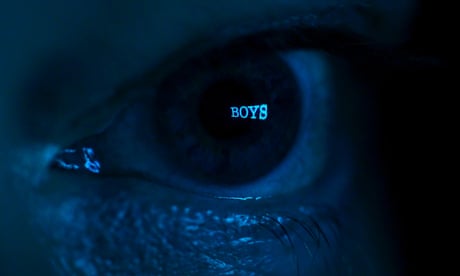
© » THE GUARDIAN
about 21 months ago (02/02/2024)
An eyeful of Soho sinners: Douglas Gordon’s All I Need Is a Little Bit of Everything review | Douglas Gordon | The Guardian Skip to main content Skip to navigation Skip to navigation Male gaze … a still from 2023EastWestGirlsBoys...

© » TWOCOATSOFPAINT
about 21 months ago (01/25/2024)
Mary Jones: Layered histories – Two Coats of Paint Mary Jones, American Interior 2023, oil on digitally printed canvas, 52 x 38 inches Contributed by Katy Crowe / “Significant Properties,” the title of Mary Jones’s current exhibition at as-is.la and her first in Los Angeles in some years, aptly suggests real estate worth seeing...
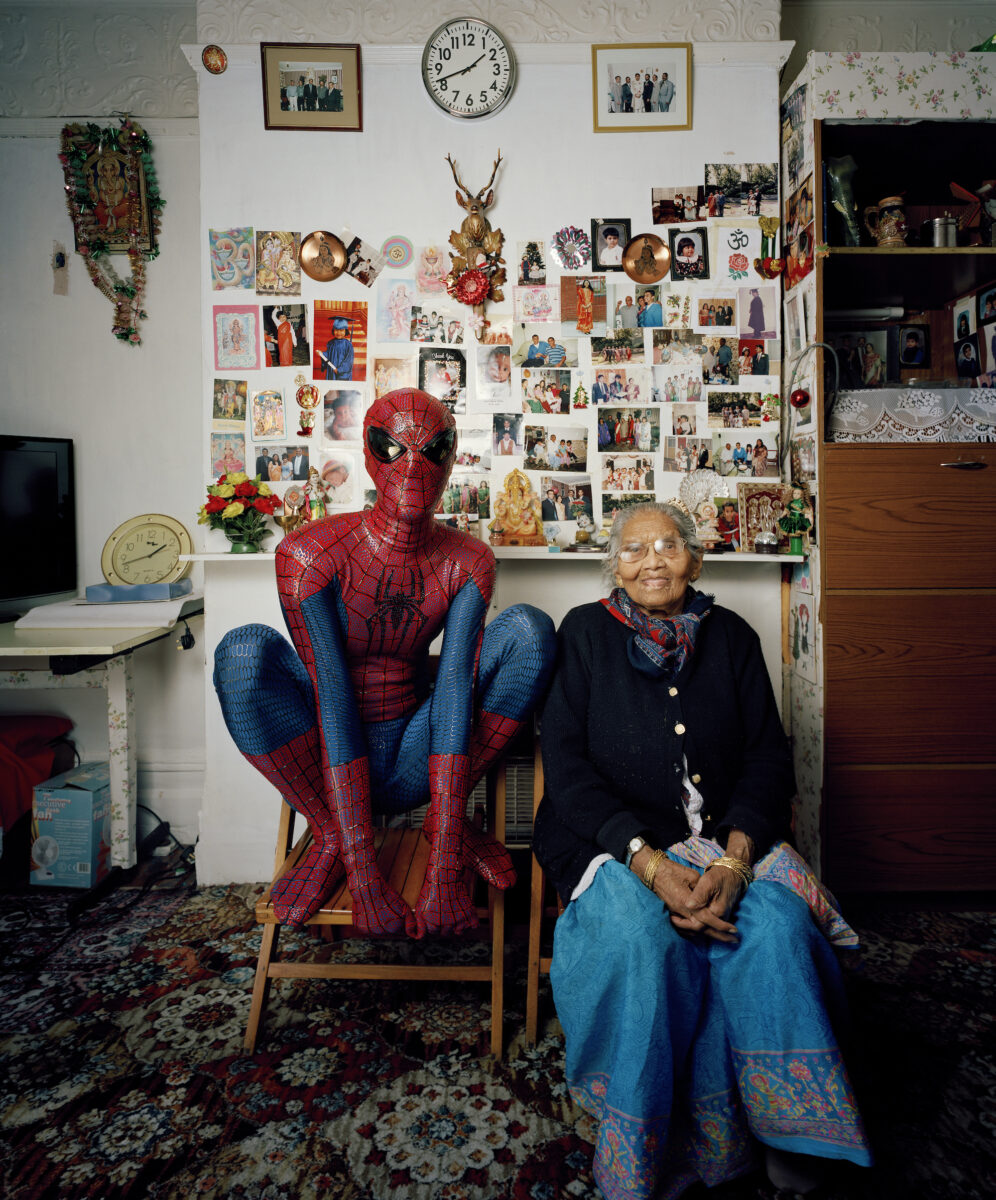
© » FAD MAGAZINE
about 21 months ago (01/25/2024)
Explore The Hobby Cave: UK's Largest Hobby Exhibition - FAD Magazine Skip to content By Mark Westall • 25 January 2024 Share — Members of the public are invited to take part in The Hobby Cave , the largest-ever exhibition of the UK’s hobbies...

© » HYPERALLERGIC
about 22 months ago (12/17/2023)
Anselm’s Sweeping Vision Obscures the Political Skip to content Anselm , dir...
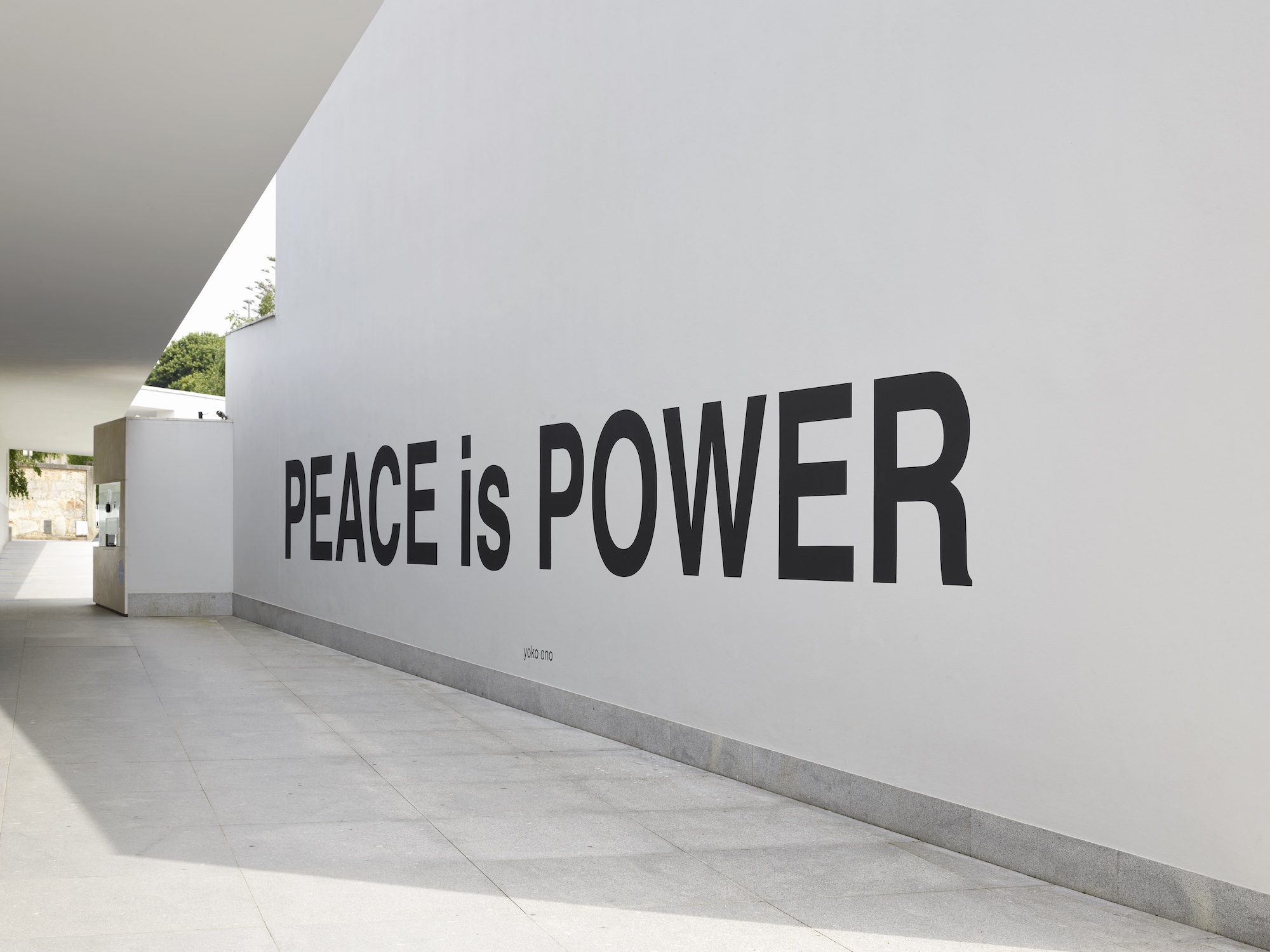
© » FAD MAGAZINE
about 22 months ago (12/15/2023)
6 museum exhibitions & 2 Art Fairs* to see early 2024...
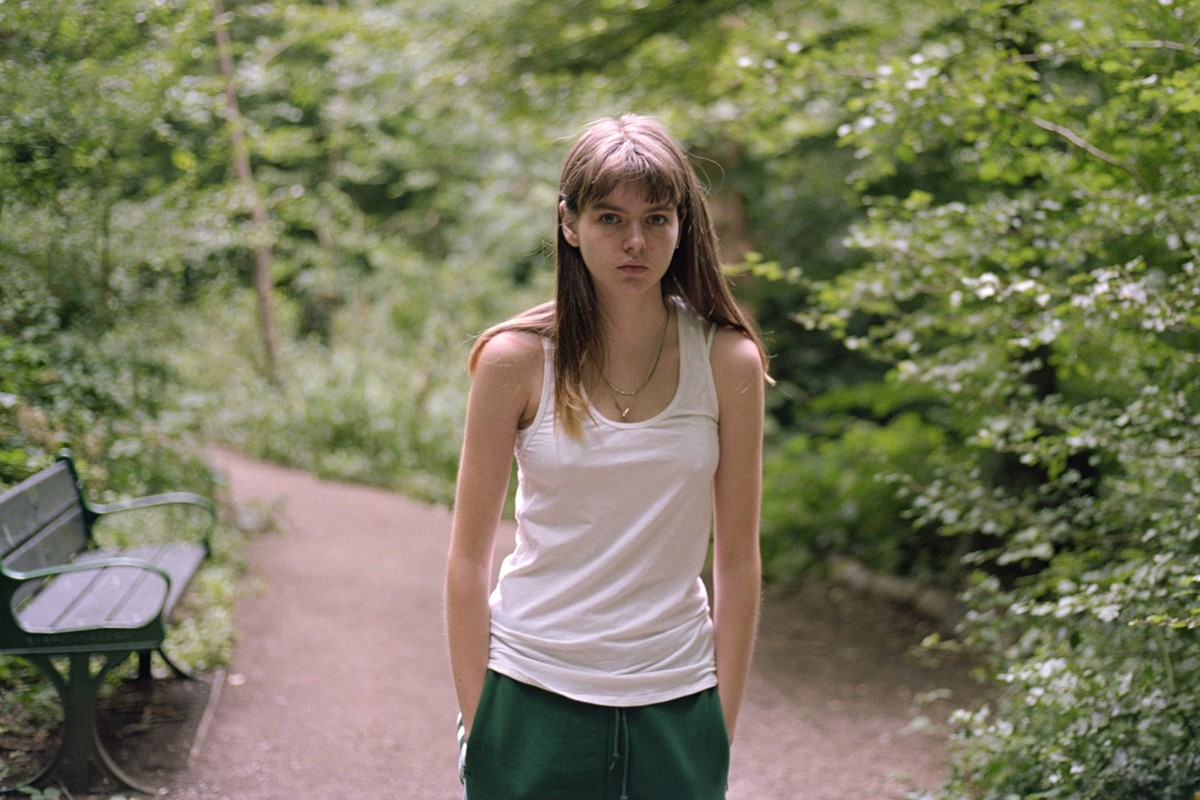
© » ANOTHER
about 22 months ago (12/12/2023)
Angela Hill’s Emotional Portrait of Her Daughter’s Adolescence | AnOther IDEA co-founder Angela Hill’s latest photo book, Edith, captures two decades of her daughter’s life as she navigates the rocky trials of adolescence December 04, 2023 Text Millen Brown-Ewens This time last year, IDEA co-founder Angela Hill had just released the independent publisher’s most personal publication to date: the first book of her own photography...
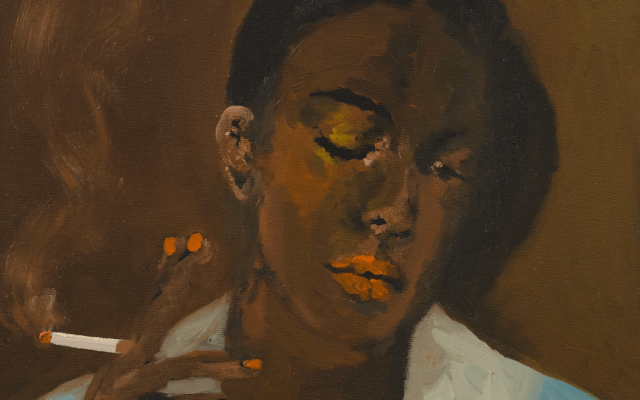
© » ART & OBJECT
about 22 months ago (12/12/2023)
5 Facts About Breakout Artist Danielle McKinney | Art & Object Skip to main content Subscribe to our free e-letter! Webform Your Email Address Role Art Collector/Enthusiast Artist Art World Professional Academic Country USA Afghanistan Albania Algeria American Samoa Andorra Angola Anguilla Antarctica Antigua & Barbuda Argentina Armenia Aruba Ascension Island Australia Austria Azerbaijan Bahamas Bahrain Bangladesh Barbados Belarus Belgium Belize Benin Bermuda Bhutan Bolivia Bosnia & Herzegovina Botswana Bouvet Island Brazil British Indian Ocean Territory British Virgin Islands Brunei Bulgaria Burkina Faso Burundi Cambodia Cameroon Canada Canary Islands Cape Verde Caribbean Netherlands Cayman Islands Central African Republic Ceuta & Melilla Chad Chile China Christmas Island Clipperton Island Cocos (Keeling) Islands Colombia Comoros Congo - Brazzaville Congo - Kinshasa Cook Islands Costa Rica Croatia Cuba Curaçao Cyprus Czechia Côte d’Ivoire Denmark Diego Garcia Djibouti Dominica Dominican Republic Ecuador Egypt El Salvador Equatorial Guinea Eritrea Estonia Eswatini Ethiopia Falkland Islands Faroe Islands Fiji Finland France French Guiana French Polynesia French Southern Territories Gabon Gambia Georgia Germany Ghana Gibraltar Greece Greenland Grenada Guadeloupe Guam Guatemala Guernsey Guinea Guinea-Bissau Guyana Haiti Heard & McDonald Islands Honduras Hong Kong SAR China Hungary Iceland India Indonesia Iran Iraq Ireland Isle of Man Israel Italy Jamaica Japan Jersey Jordan Kazakhstan Kenya Kiribati Kosovo Kuwait Kyrgyzstan Laos Latvia Lebanon Lesotho Liberia Libya Liechtenstein Lithuania Luxembourg Macao SAR China Madagascar Malawi Malaysia Maldives Mali Malta Marshall Islands Martinique Mauritania Mauritius Mayotte Mexico Micronesia Moldova Monaco Mongolia Montenegro Montserrat Morocco Mozambique Myanmar (Burma) Namibia Nauru Nepal Netherlands Netherlands Antilles New Caledonia New Zealand Nicaragua Niger Nigeria Niue Norfolk Island Northern Mariana Islands North Korea North Macedonia Norway Oman Outlying Oceania Pakistan Palau Palestinian Territories Panama Papua New Guinea Paraguay Peru Philippines Pitcairn Islands Poland Portugal Puerto Rico Qatar Romania Russia Rwanda Réunion Samoa San Marino Saudi Arabia Senegal Serbia Seychelles Sierra Leone Singapore Sint Maarten Slovakia Slovenia Solomon Islands Somalia South Africa South Georgia & South Sandwich Islands South Korea South Sudan Spain Sri Lanka St...

© » OBSERVER
about 23 months ago (11/28/2023)
On View: Deborah Turbeville “Photocollage” at Photo Elysée | Observer Though her name remains relatively under the radar compared to peers like Helmut Newton and Guy Burdin, Deborah Turbeville and her body of work left a permanent impression on the photography world...

© » BOMB
about 25 months ago (09/26/2023)
BOMB Magazine | Will Rawls Interviewed Necessary (Required) Cookies that the site cannot function properly without...

© » LENS CULTURE
about 29 months ago (05/30/2023)
MIDO - Photographs by Julie Joubert | Text by Magali Duzant | LensCulture Award winner MIDO From atmospheric studio shots to grainy selfies, Julie Joubert uses a spectrum of different image formats to paint a multilayered portrait of a young man’s journey to define himself in the face of struggle...

© » ARTS EQUATOR
about 38 months ago (09/08/2022)
Art in Exile: Burmese Artists in Thailand | ArtsEquator Skip to content Burmese artists make art in exile in Thailand, finding refuge and showcasing cross-border solidarity for artistic freedom...

© » ARTS EQUATOR
about 42 months ago (05/11/2022)
Quiz: How well do you know Southeast Asian films? | ArtsEquator Skip to content While the works of Steven Spielberg, Wong Kar-wai and Bong Joon-ho have left a mark on the world, we should not forget our homeground talents, from the late Malaysian director Yasmin Ahmad, to Indonesian actor Iko Uwais, and father of Philippines cinema, José Nepomuceno...
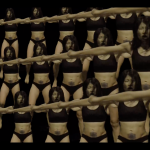
© » ARTS EQUATOR
about 60 months ago (11/10/2020)
Harrowing and sublime: Topography of Breath 2.0 by Pat Toh | ArtsEquator Thinking and Talking about Arts and Culture in Southeast Asia Articles Pat Toh November 10, 2020 By Chan Sze-Wei (739 words, 4-minute read) In grainy close up, we see segmented views of one woman, fighting to breathe with every fibre of her sinewy body...
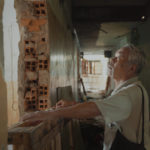
© » ARTS EQUATOR
about 68 months ago (03/19/2020)
The Space of/for Memory: ”Last Night I Saw You Smiling” | ArtsEquator Thinking and Talking about Arts and Culture in Southeast Asia Articles Courtesy of artist March 19, 2020 By Alfonse Chiu (2,078 words, 7-minute read) Every space tells a story: the empty prison cell speaks of redemptions, of wrongs that were righted, and to the cynical, more earthly, minds, of miscarriages of justice, and the irrevocability of tragedies and the people who made them; the crowded hospital ward hums, sometimes a baleful tune when a heart attack becomes a full-body scan becomes something decidedly terminal, and sometimes a bright chime when a newborn takes their first breaths and screams to announce their entry into this world; and tales of homes, houses, and hauntings have infested almost every definition and genre of fiction and non-fiction known to mankind: killing, nourishing, obscuring, stagnating, etc...
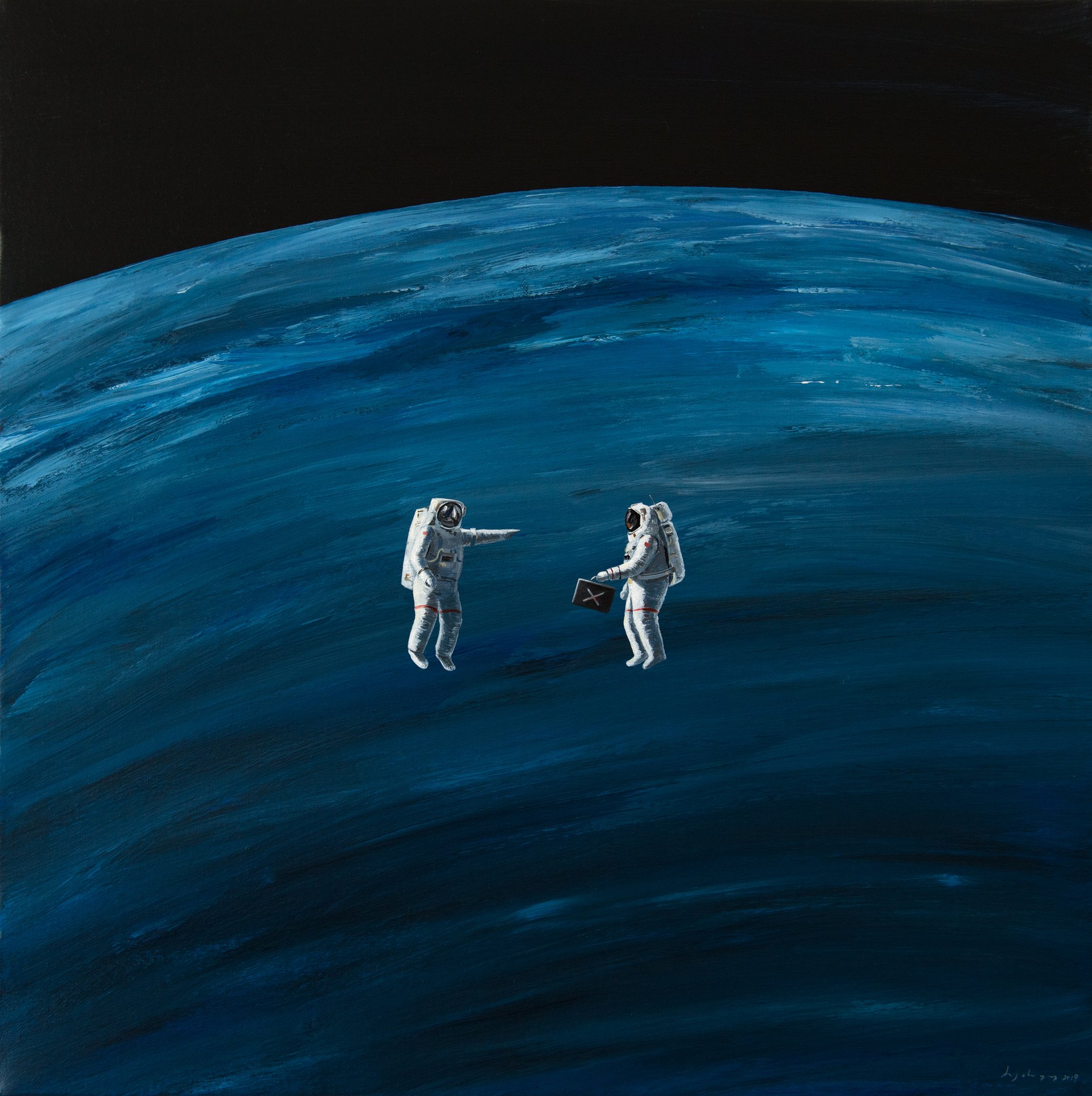
© » HIGH FRUCTOSE
about 71 months ago (12/17/2019)
Zhiyong Jing says he paints "dreams, bodies and absurd realities." The Beijing-based artist takes a surprising approach to scale in his work, often rendering distant figures on small canvases...

© » HIGH FRUCTOSE
about 71 months ago (12/11/2019)
The paintings of Jean Paul Langlois blend memories of 1970s sci-fi and Westerns of his youth, while also exploring the artist’s connection to his own native and non-native roots...

© » ARTS EQUATOR
about 75 months ago (08/01/2019)
"In Time To Come" at LumiNation 2019 | ArtsEquator Thinking and Talking about Arts and Culture in Southeast Asia Articles August 1, 2019 We asked our readers what they would put in a time capsule...
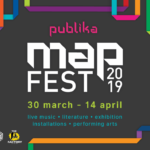
© » ARTS EQUATOR
about 80 months ago (03/25/2019)
Weekly Picks: Malaysia (25–31 Mar 2019) | ArtsEquator Thinking and Talking about Arts and Culture in Southeast Asia Weekly To Do March 25, 2019 For events in Penang this week, go to the Penang Free Sheet ...
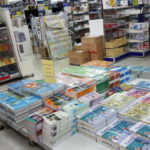
© » ARTS EQUATOR
about 83 months ago (12/27/2018)
Gloomy outlook for Vietnamese cinema, literature scene: workshop (via Tuoi Tre News) | ArtsEquator Thinking and Talking about Arts and Culture in Southeast Asia Articles Photo: Tuoi Tre December 27, 2018 Attendees at a national workshop held in Hanoi on Wednesday to discuss the multitude of issues plaguing the Vietnamese film and literature industries were not shy about voicing disdain for the current state of literary and cinematic art in Vietnam...

© » ARTS EQUATOR
about 84 months ago (11/12/2018)
Weekly Picks: Malaysia (12–18 Nov 2018) | ArtsEquator Thinking and Talking about Arts and Culture in Southeast Asia Weekly To Do November 12, 2018 Bisikan Monsoon — Open Rehearsal , at Selangor & KL Kwang Tung Association, 13 Nov, 5:30pm An invitation to view the rehearsals for Kwang Tung Dance Company’s Bisikan Monsoon (the show is travelling to China later in the month)...

© » ARTS EQUATOR
about 85 months ago (10/22/2018)
Vietnam to Ban Gratuitous Smoking in Movies, Stage Productions (via Saigoneer) | ArtsEquator Thinking and Talking about Arts and Culture in Southeast Asia Articles October 22, 2018 Starting from November, filmmakers will need to carefully deliberate their decision to include smoking in their works or risk the ire of the culture ministry...

© » ARTS EQUATOR
about 86 months ago (10/01/2018)
Vietnamese director's debut feature The Third Wife wins award at Toronto Film Festival | ArtsEquator Thinking and Talking about Arts and Culture in Southeast Asia Articles October 1, 2018 The directorial debut from Nguyen Phuong Anh, also known as Ash Mayfair, won the Network for the Promotion of Asian Cinema (NETPAC) award at last week’s Toronto International Film Festival (TIFF)...

© » UNRATED
about 86 months ago (09/17/2018)
Rudi Geyser — UNRTD™ Rudi Geyser After spending many of his twenties in the UK, photographer Rudi Geyser has returned to his homeland of South Africa for his most recent body of work...
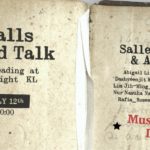
© » ARTS EQUATOR
about 88 months ago (07/09/2018)
Weekly Picks: Malaysia (9 – 15 July 2018) | ArtsEquator Thinking and Talking about Arts and Culture in Southeast Asia Malaysia July 9, 2018 Sesi Diskusi Buku KAOS NOL , Lit Books, 11 July 7pm This book club meets every two weeks to discuss books that focus on theatre and the performing arts...
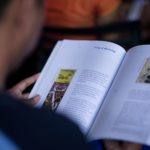
© » ARTS EQUATOR
about 89 months ago (07/02/2018)
Once-thriving Myanmar cinema readies for new wave (via Nikkei Asian Review) | ArtsEquator Thinking and Talking about Arts and Culture in Southeast Asia ArtsEquator Radar July 2, 2018 YANGON — Change is afoot in Myanmar’s now moribund movie industry...
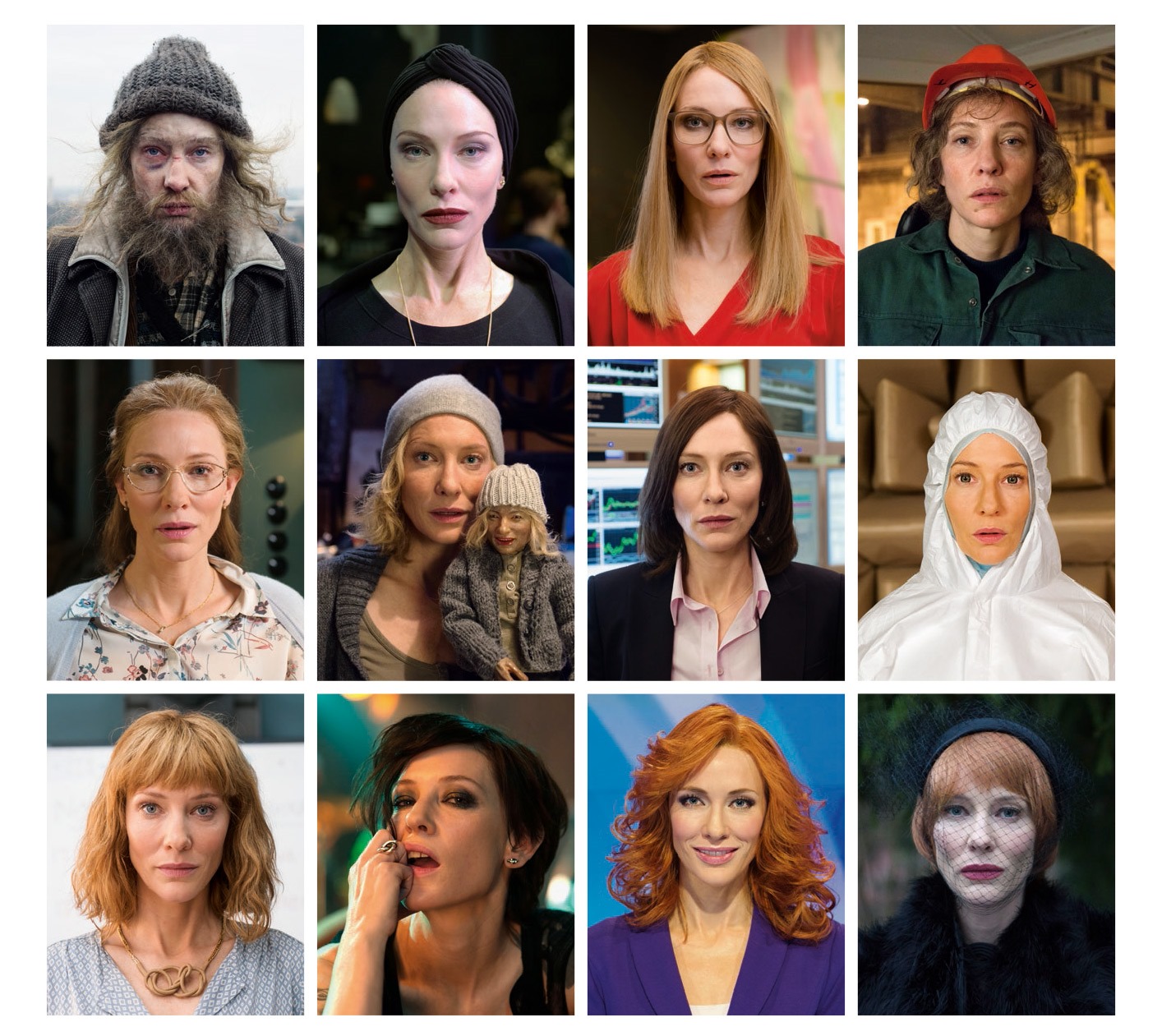
© » THE RE:ART
about 103 months ago (04/16/2017)
BIEFF #7 | Winners and Highlights - The re:art BIEFF #7 | Winners and Highlights Created under the token of the ancient Mayan greeting In Lak’ech Ala K’in (You Are Another Me), the 7th edition of the Bucharest International Experimental Film Festival BIEFF , held between March 28th and April 2nd, 2017, was a success and consisted of outstanding films raising debate around the notion of border and proposing “a denial of barriers – those between individuals, but also those of the cinematic language.” BIEFF INTERNATIONAL COMPETITION | WINNERS AND FAVORITES This year, the international competition focused on five major themes – You Are Another Me, The Politics of the Body, Searching for Transcendence, The Alchemy of the Frame, Cutting the Cord...
-
1980-1989
Karen Lamassonne
1989Ventana indiscreta (Rear Window) by Karen Lamassonne takes its title from Hitchcock’s renowned 1954 classic...
-
1990-1999
Douglas Gordon
1996In Monster (1996-97), the artist’s face becomes grotesque through the application of strips of transparent adhesive tape, typical of Gordon’s performance-based films that often depict his own body in action...
Stan Douglas
1997Michigan Central Station is part of a larger photographic series, Detroit Photos , which includes images of houses, theaters, stadiums, offices, and other municipal structures...
-
2000-2009
Xu Tan
Drawing & Print
2000(Drawing & Print) Shanghai Biennale, Awaiting Your Arrival is an appropriation of the posters made to promote biennial art exhibitions...
Ian Wallace
2000Untitled (Breathless) presents a folded newspaper article on Jean-Luc Godard’s À Bout de Souffle (Breathless)...
Douglas Gordon
2002Blind Spencer is part of the series “Blind Stars” including hundreds of works in which the artist cut out the eyes of Hollywood stars, in a symbolically violent manner...
Xu Tan
Drawing & Print
2003(Drawing & Print) Biennale, Dog is an appropriation of the posters made to promote biennial art exhibitions...
Wong Hoy Cheong
2004Re: Looking marks a new phase in Wong’s work which connects his region’s history with other parts of the world...
Mario Garcia Torres
2004Mario Garcia Torres imagines cinematic devices to replay stories occasionally forgotten by Conceptual art...
Clemens von Wedemeyer
2004Die Siedlung is a filmic documentary about the recent shift in housing developments in Leipzig-Grünau in former East Germany and its consequences on some inhabitants...
Douglas Gordon
2004Douglas Gordon’s single-channel video The Left Hand Can’t See That The Right Hand is Blind, captures an unfolding scene between two hands in leather gloves—at first seemingly comfortable to be entwined, and later, engaged in a struggle...
Gregory Crewdson
2005Forest Gathering N.2 is part of the series of photographs Beneath the Roses (2003-2005) where anonymous townscapes, forest clearings and broad, desolate streets are revealed as sites of mystery and wonder; similarly, ostensibly banal interiors become the staging grounds for strange human scenarios...
Amie Siegel
2005Berlin Remake ( 2005) combines extracts of East German films with images filmed by the artist in Berlin...
Nagendra Gurung
2005Chalis Katesi Ramaula is a series of 240 prints capturing Nagendra Gurung’s life, work, and colleagues from the construction sites where he has worked in Dubai and Saudi Arabia...
Elizabeth McAlpine
2005Elizabeth McAlpine’s work frequently deals with time based issues as well as the experience of watching...
Laurent Montaron
2006This film refers directly and fictionally to one of the first media dramas: the burning of the Zeppelin aircraft LZ 129 Hindenburg as it landed in New York in 1937...
Bruno Pacheco
2006En Guard Souvenir is composed of a group of eleven elements (ten paintings on paper and a sculpture) which deconstructs and recomposes the context of Tienanmen Square in Beijing...
Claudia Joskowicz
2007The primary interest in the trilogy is Joskowicz’s use of cinematic space, with long tracking shots that portray resistance to habitual viewing experiences of film and television...
Colter Jacobsen
2007Victory at Sea is a simple mechanism made from cardboard and found materials that mimics the Phenakistoscope, an early cinematic apparatus...
Ulla von Brandenburg
2007Eight opens with a close up of a painting by Hubert Robert of the Chateau de Chamarande where the film was shot...
Claudia Joskowicz
2008The primary interest in the trilogy is Joskowicz’s use of cinematic space, with long tracking shots that portray resistance to habitual viewing experiences of film and television...
Sharon Lockhart
2008Lockhart’s film Lunch Break investigates the present state of American labor through a close look at the everyday life of the workers at the Bath Iron Works shipyard—a private sector of the U...
Sharon Lockhart
2008Lockhart’s film Lunch Break investigates the present state of American labor, through a close look at the everyday life of the workers at the Bath Iron Works shipyard—a private sector of the U...
Jakrawal Nilthamrong
2008The film Man and Gravity follows the journey of a man in an old, beaten motorcycle, struggling to transport his possessions through a mountainous landscape...
Claudia Joskowicz
2009The primary interest in the trilogy is Joskowicz’s use of cinematic space, with long tracking shots that portray resistance to habitual viewing experiences of film and television...
Wong Hoy Cheong
2009Days of Our Lives: Reading is from a series of work was created for the 10th Biennale de Lyon by the artist...
Wong Hoy Cheong
2009Created for the tenth Lyon Bienniale, in Days of Our Lives: Playing for Dying Mother, Wong’s ongoing negotiation of postcolonial globalization takes aim at French society...
Michelle Handelman
2009In Dorian, a cinematic perfume, video is used as a community gatherer, a tool to speak about particular subcultures, in this case the trans-gender drag queen New York community, past and present...
Geoffrey Farmer
2009Ongoing Time Stabbed with a Dagger was Farmer’s first kinetic sculpture that added a cinematic character to an “ever-reconfiguring play presented in real time.” The assembly of various objects and props on top of a large platform constitutes not only a work, but, to a certain extent, a show in itself...
Doug Aitken
2009The version of Frontier acquired by the Kadist Collection consists of a single-channel video, adapted from the monumental installation and performance that Aitken presented in Rome, by the Tiber River, in 2009...
George Kuchar
2009Burrito Bay is a video by George Kuchar that follows the format of a diary or travelogue centered on a tropical trip to Acapulco, Mexico...
Miljohn Ruperto
2009Miljohn Ruperto’s silent video work Appearance of Isabel Rosario Cooper is an archive of ghosts...
-
2010-2019
Chen Chieh-Jen
2010Empire’s Borders II – Passage and Empire’s Borders II – Workers are from the three-channel film installation Empire’s Borders II – Western Enterprise, Inc...
Chen Chieh-Jen
2010Empire’s Borders II – Passage and Empire’s Borders II – Workers are from the three-channel film installation Empire’s Borders II – Western Enterprise, Inc...
Nathaniel Dorsky
2010Dorsky’s pieces included in the Kadist Collection are small still photographs from twelve of his most important films...
Euan Macdonald
2010The video 9000 PIECES by Euan Macdonald was filmed at a musical instrument factory in Shanghai where 90 percent of the pianos that they manufacture are exported around the world, and only 10 percent are “finished” and can be labeled “Made in the US (or) Europe.” The video captures an intricate network of mechanisms as they interact with each other, their rhythmic movements resulting in an intense choreography and a cacophony of metallic sounds dramatized by Macdonald’s editing...
Takeshi Murata
2010If one had been guessing at Takeshi Murata’s criticism of American consumerist culture up until watching Infinite Doors , it would be solidified after hearing the announcer from The Price is Right squawk prizes one after the next...
Olive Martin and Patrick Bernier
2010The Mohawk, the emblematic Frontier river in the period of American colonisation, is here a cable of data transmission, and the 7 Sultans Casino is a virtual destination, one of the three hundred online casinos hosted by the servers located in Kahnawake, a small native american indian reserve to the south of Montreal...
Matt Lipps
2011In the series Horizons (2010), Lipps uses appropriation to riff on Modernism’s fascination with abstract form...
Sharon Lockhart
2011Visalia Livestock Market, Visalia, California results from Lockhart’s prolonged investigation of an agricultural center and community...
Matt Lipps
2011Untitled (Women) (2011) presents a startlingly succinct history of violently romanticized femininity...
Ranu Mukherjee
2011Conceived as a large-scale mural-like projection, Color of History, Sweating Rocks is a neo-futuristic, hybrid film that combines cinematic language, collage, animation, and inventive forms to highlight the plight of the peoples of the Sahara—and refugees in general—who have been displaced by oil-mining....
Maya Watanabe
2011El Contorno (Outlines) is a three-channel video installation that features five actors performing a script—at times individually and at times in unison—choreographically moving across an indistinct urban space...
Taiki Sakpisit
2011A Ripe Volcano , a collaboration with Yasuhiro Morinaga, revisits two sites of violence and aggression in Thailand’s recent past: The Rattanakosin Hotel, the site where the military troops captured and tortured the civilians, students and protestors who were hiding inside the hotel during the Black May of 1992; and Ratchadamnoen Stadium, a Roman amphitheater-style Muay Thai boxing arena, which was built in 1941-45 during the Second World War and since then has become the theatrical labyrinth for more acculturated and commercially “acceptable” displays of bloodshed...
Karthik Pandian
2012Filmed in Morocco, the film Atlas by Karthik Pandian continues his investigation into history, site and monument...
Amie Siegel
2013Winter is a film installation of multiple tenses—shot in the recent past, depicting an unknown future, unfolding (and changing) in the present of the exhibition...
Angelica Mesiti
2013Angelica Mesiti’s piece, The Calling (2013-14) is a poignant exploration of ancient human traditions evolving and adapting to the modern world...
Takeshi Murata
2013Takeshi Murata developed an interest in space inspired by his architect parents...
Claudia Joskowicz
2014Los rastreadores is a two-channel video by Claudia Joskowicz narrating the story of a fictitious drug lord, Ernesto Suarez, whose character is based on the well-known Bolivian drug dealer, Roberto Suárez...
Sara Eliassen
2014Sara Eliassen’s video work A Blank Slate (2014) employs cinematic effect to investigate the relationships between subjectivity, gaze, and memory...
Gilad Ratman
2014Originally a multi-channel video installation with sculptures and sound, this iteration of The Workshop by Gilad Ratman is a three-channel distillation of the expansive project that follows a group’s underground pilgrimage from Mt...
Claudia Joskowicz
2015Some Dead Don’t Make a Sound (Hay muertos que no hacen ruido) is a single-channel video by Claudia Joskowicz that features the Mexican legend of the Weeping Woman (La Llorona) as its main protagonist...
Christine Rebet
2015In the Soldier’s Head evokes the traumas of war through the prism of the hallucinations of a soldier...
Beatriz Santiago Muñoz
2015Marché Salomon by Beatriz Santiago Muñoz depicts two meat vendors, a young man and woman, chatting in Marché Salomon, a busy Port-au-Prince market...
John Gerrard
2016Flag (Thames) 2016 depicts a small section of the Thames River—one that is adjacent to the Palace of Westminster in London—as an algorithmic representation on an LED panel...
Juliana Huxtable
2017Herculine’s Prophecy by Juliana Huxtable features a kneeling demon-figure on what appears to be a screen-print, placed on a wooden table, which has then been photographed and digitally altered to appear like a book cover, with a title and subtitle across the top, and a poem written across the bottom...
Curtis Talwst Santiago
2017Curtis Talwst Santiago has been creating intimate and performative environments within these small spaces for several years; the artist used to carry them around to show visitors one on one, opening up a scene in the space of his hand...
Diego Marcon
2017Monelle by Diego Marcon was filmed at night inside the infamous Casa del Fascio, the headquarters of the local Fascist Party in Como Italy, designed by Giuseppe Terragni under Mussolini’s rule...
Joana Hadjithomas & Khalil Joreige
2017Produced for the Prix Marcel Duchamp and presented at the Centre Pompidou in October 2017, the installation Unconformities is comprised of photographs, archaeological drawings, and narratives, based on the analysis of core samples from different sites in Beirut, Paris and Athens...
Joana Hadjithomas & Khalil Joreige
2017Produced for the Prix Marcel Duchamp and presented at the Centre Pompidou in October 2017, the installation Uncomformities is comprised of photographs, archaeological drawings, and narratives, based on the analysis of core samples from different sites in Beirut, Paris and Athens...
Korakrit Arunanondchai
2017His untitled paintings express his concern regarding perception in abstract form...
Jakrawal Nilthamrong
2018Invalid Throne by Jakrawal Nilthamrong is a 35mm film that searches the protagonist Kamjorn Sankwan’s memory and connection with the land he grew up in...
Che Onejoon
2018Che Onejoon’s unsettling video My Utopia opens with a round table of women asking and answering the questions “Who am I? Where did I come from? Where should I go?” One of the women featured is Monique Macías, the daughter of Francisco Macías Nguema, the first Prime Minister of Equatorial Guinea...
Luiz Roque
2019In Luiz Roque’s short film Zero we follow a dog moving alone onboard an aircraft that flies over a vast desert...
